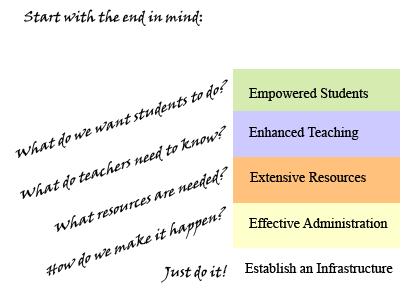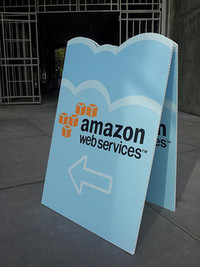This past weekend I flew to Vietnam to spend two days with the Senior Management Team (SMT) of the British International School of Vietnam (BISVietnam). A two day retreat that focused on a future with technology and a 1:1 program.
There are so many different ways to go 1:1 and in my opinion no one right way to do it. There are so many variables that need to be considered that 1:1 programs can look drastically different from one school to the next and still be successful.
Here are a few of the things we discussed:
Money:
It’s always the elephant in the room and the problem with dreaming of endless possibilities without considering the cost leads one to believe that the dreams can become reality and in many cases it is just not financially feasible to fulfill our wildest technology dreams. As much as we want to say money is not a factor…..at some point it always is.
Infrastructure:
In many countries in Asia this can be the most frustrating part of the whole plan. We all read, watch, and see the amazing things that are happening on the web. However, to do those amazing things you need a web connection. In developing countries like Vietnam the Internet is expensive, unreliable, and most of the time just plain frustrating. BISVietnam currently has a 2MB Internet line for 1600 students. Think about that the next time you want to complain about your Internet speed.
You can not consider going 1:1 without looking at the cost and feasibility of it from an infrastructure standpoint. Money put into your infrastructure is always well spent but it also means every dollar that goes towards infrastructural improvements is dollars taken away from learning devices. Finding the balance is important.
If a school spends money building up an infrastructure that looks to support learning years from now then you’re wasting money. You might know what you will need two or three years from now…but you don’t need that today. The chances are the infrastructure your school will need in the future will get cheaper and faster.
Example: You know you’re going to need more server space as students store more and more data on the Intranet. Calculate how much storage you’ll need this year and next year. But only purchase what you need for this year. By next year the cost of the same storage will be cheaper and faster.
In the end support what you need, not what you want.
Intranet vs The Cloud:
Really what this should say is Internal Cloud vs External Cloud. Based on the infrastructure that is available to a school, you may need to consider building your own Internal Cloud. Basically turning those old folder heavy Intranet servers into web accessible servers. By making your Intranet Servers accessible via a web browser you can essentially create your own cloud on your campus. You can install programs like WordPress, Elgg, Drupal, and a host of other open-source software that essentially creates your own Internal Cloud system.
This is a common process in China where access to many cloud services is blocked by the government. If that’s the case, or you don’t have a fast reliable Internet connection then building your own cloud is an option. Shanghai American School is a great example of a school building an internal cloud. Check out there Online Community Portal
At ISB, my current school for 23 more days, we are slowly making the transition from an Internal Cloud to an External Cloud system. When I arrived four years ago we starting building our Internal Cloud system as it was faster and more reliable. As the infrastructure of Thailand has improved and we’ve been able to purchase more bandwidth (20MB when I arrived and 100MB now for 1800 students) we’ve slowly moving to an external cloud.
Exchange Mail Server to Google Apps – 2011-2012
Hosted Moodle to Externally Hosted LMS – 2012-2013
Internal Hosted Blogs to External Hosted Blogs – 2014
Or something like that. By moving these services to the external cloud we trade servers for Internet speed and reliability. As our speed and reliability increases so can our reliance on the external cloud.
Learning Devices:
Of course this is where we all like to discuss our options. What devices are right for students? 
The only way to answer this question is to first identify what it is you want students to be doing with the laptops. What kind of experiences do you want them to have, what skills do you want them to gain and what creative products do you want them to produce?
By first identifying what we want students to do at different grade levels we can then choose the device that meets those needs.
Again…dreaming here can be dangerous. We must realized and understand that in developing countries we don’t always get the lastest and greatest technology and not every company is currently supporting devices in every country. In Vietnam’s case Apple has no support in Vietnam as of yet. Sure, you can buy Apple products, but any support needed on those products has to be sent out of the country. Coming to the realization of what’s possible and what learning devices you have access to is not always fun…but again is reality.
Ownership:
Ownership is something I think we spend to much time and effort on….as basically you have two options.
1. School Owned
2. Parent/Student Owned
This decision comes down to two points.
- Can the school afford to own all the laptops?
- If the answer is no…then Parent/Student owned is your only option
- If the answer is yes….then you need to think about and understand your community
- Will the school community support a laptop program?
- Have we done work with the school community in helping them understand the reasoning behind a 1:1 program?
- How can we move our school culture forward?
- Can our community afford it?
Administrators must know their community and be willing to hold community sessions to educate the community on the benefits of a 1:1 program. This decision is a school based one. Both options work…it’s picking the best option for your school that is important to success.
In the end, you can look around at what other schools are doing or have done but that will only get you so far. Every school culture and situtation is different, hence there is no one way to roll out a 1:1 program that is magical and perfect. They all have their positives and negatives. At the end of the day make a decision and just do it!




















